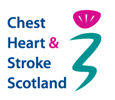Causes and risk factors associated with bronchiectasis
Bronchiectasis is caused by inflammatory damage to the airways. In about half of all people with bronchiectasis the cause of the damage cannot be found. In the other half an identified underlying cause has damaged the airways, leading to bronchiectasis.
Examples of underlying causes include:
-
Post-infectious:
- Previous childhood respiratory infections due to viruses (i.e., measles, influenza, whooping cough).
- Previous infections with Mycobacteria (Tuberculosis) or severe bacterial pneumonia.
- Exaggerated response to inhaled Aspergillus fumigatus (air borne fungus).
-
Immunodeficiency:
- Immunoglobulin deficiency.
- HIV infection.
-
Genetic:
- Cystic fibrosis.
- Ciliary dyskinesia or immotile cilia syndrome.
- Alpha-1-antitrypsin deficiency (also causes COPD and emphysema).
-
Aspiration or inhalation injury.
-
Focal bronchial obstruction:
- Foreign body, egg or peanut allergy, parts of toys, teeth etc.
- Stenosis – narrowing of major air passage.
- Tumour – blocking airways.
- Enlarged lymph nodes pressing on airways narrowing them down.
Associated conditions
These are non respiratory conditions which can be associated with inflammation but may present symptoms alongside bronchiectasis.
-
Connective tissue disorders:
- Rheumatoid arthritis.
- Sjogren's syndrome.
-
Inflammatory bowel diseases:
- Ulcerative colitis.
- Crohn's disease.




